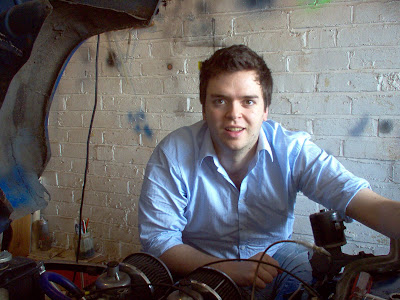My first project on the lathe is complete! I've created three knobs for the end of the feed handles on my pillar drill. They're not very complex, which is why I thought they would be a good first project to get used to the lathe!
I started off by cutting a length of 2cm diameter aluminium bar into three 5cm sections. I then faced both ends of each piece and worked them until they were all within 1/10th of a mm and then I centre drilled and tapped each piece. After a quick tool change, I turned each piece just to clean then up a bit, before putting a slight bevel on the tops to loose the sharp edge.
I then set the thing up to do some tapering. The Unimat has a really neat headstock that can be twisted. That puts the work at an angle and allows tapered pieces to be created really easily. After making a couple of passes to neaten it up I was done!
I started off by cutting a length of 2cm diameter aluminium bar into three 5cm sections. I then faced both ends of each piece and worked them until they were all within 1/10th of a mm and then I centre drilled and tapped each piece. After a quick tool change, I turned each piece just to clean then up a bit, before putting a slight bevel on the tops to loose the sharp edge.
I then set the thing up to do some tapering. The Unimat has a really neat headstock that can be twisted. That puts the work at an angle and allows tapered pieces to be created really easily. After making a couple of passes to neaten it up I was done!
 This is the drill as purchased - with nasty black plastic knobs.
This is the drill as purchased - with nasty black plastic knobs. The freshly turned aluminium replacements!
The freshly turned aluminium replacements!
 I think they look pretty good! They aren't perfect but I am very impressed with the finish on them. I still have a few things to learn before I make a few bits up for the car though! If anyone knows a good tip for stopping the chuck marking a previously worked surface I want to hear it - it'll save me a fair bit of polishing next time!
I think they look pretty good! They aren't perfect but I am very impressed with the finish on them. I still have a few things to learn before I make a few bits up for the car though! If anyone knows a good tip for stopping the chuck marking a previously worked surface I want to hear it - it'll save me a fair bit of polishing next time! 






